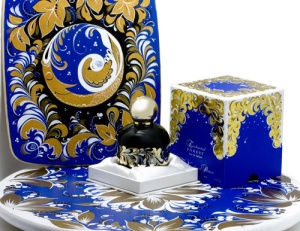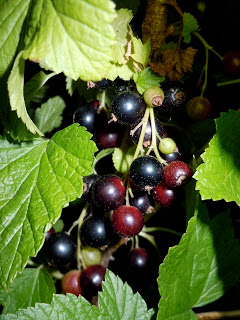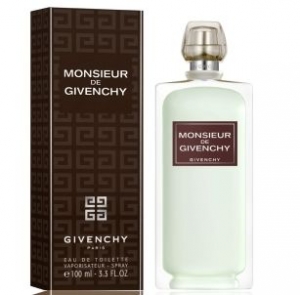Imagine a sea of pine and evergreens. There is a small hole in the thick blanket of trees through which the sun hits a golden light tunneling down to the dark, damp, forest floor. The ray of light hits turns some plants bright, incandescent green. Peeking out from behind the leaves are lush, ripe black currants. A few lie crushed — spilling out a crimson hue that contrasts brightly again the pine cones and the dark, grey-green mosses. All around, hidden outside the beacon of light, are the woods. Looming dark and majestic, they are silent, mysterious, unknown, and beckoning. That is The Enchanted Forest,  a newly released perfume for men and women created by Bertrand Duchaufour for the new niche perfume house, The Vagabond Prince.
a newly released perfume for men and women created by Bertrand Duchaufour for the new niche perfume house, The Vagabond Prince.
Bertrand Duchaufour has been called “the new pope of niche fragrances.” The legendary nose behind many L’Artisan Parfumeur scents — including Timbuktu and Dzongha — he has also created perfumes for Penhaligon, Créations Aromatiques, Comme de Garçon Kyoto, Acqua di Parma, Eau d’Italie, and, now, The Different Company.
Recently, however, he collaborated with The Vagabond Prince (a new niche perfume house out of California and owned by the founders of Fragrantica) on their first perfume, The Enchanted Forrest.
His thoughts and intentions behind the scent are quite instructive. In an article he wrote for Fragrantica, he states:
Enchanted Forest is a unique fragrance for several reasons. It is the only perfume I know of that is built around blackcurrant as the sole raw material, to such an extent that one can say it is a CASSIS. Another reason why we can speak of its uniqueness is the topic, this pagan festival that is the Kupala—a Slavic tradition that continues, more festive than other things at present, as a kind of homage to nature and the mysteries of the forest.
At the same time, he wanted to evoke the dark, mysterious nature of a forest. So, he “chose the balsam fir, because it symbolizes the quintessential Russian forest,” seeking to link the “earthy notes” in the fragrance with “pine and the dried pine needles covering the floor of an endless pine and fir land.” (Id.)
But his goal was far more than just black currant, earth notes and slavic forests. Duchaufour explicitly sought to bring in a pagan element: joyful abandon, but with softness and femininity.
[N]either have I forgotten the joyful pagan side of the festival, by giving—mainly in the top notes—sparkling effects of citrus and alcohol (wine, coriander seed, pink pepper and just a trace of orange) that mingle with discrete floral notes but feminize the heart of the fragrance, such as hawthorn, rose, a touch of jasmine, carnation … just to offset everything else that could have made it a little too masculine. The whole composition oscillates between the dark masculine strength of the forest, the smooth, juicy and delicious blackcurrant and some soft flowers. The seduction which emanates from the bottom of the fragrance develops power with amber notes and very sophisticated musk.
Enchanted Forest is classified as a “woody aromatic” and its notes on the sample I received are as follows:
Top notes: pink pepper, aldehydes, sweet orange (traces), flower cassis, blackcurrant leaf, hawthorn, effects of rum and wine, rosemary, davana.
Heart notes: blackcurrant buds absolute (by LMR from Grasse), CO2 blackcurrant (by Floral Concept from Grasse), Russian coriander seed, honeysuckle, rose, carnation, vetiver
Base notes: opoponax resinoid, Siam benzoin, amber, oakmoss, fir balsam absolute, Patchouli Purecoeur®, castoreum absolute, cedar notes, vanilla, musk.
I was quite pleasantly shocked and pleased to receive a sample from the company, but I vowed I would always give you my blunt opinion regardless of how I obtained the perfume. And the bottom line is: I don’t think I’m the target audience for this very evocative, very well-made scent, but I’m sure it will be a hit.
The Enchanted Forest opens with a burst of cassis (which is the French name for black currants and what I’m used to using) and citrus. It’s the bright, zesty zing of a freshly grated lemon rind, and it’s a lovely pairing with the tart, sweet, fresh burst of cassis. Cassis doesn’t have the slightly over-ripe opulence of a purple (let alone a purple patchouli) fruit as used in perfume; it’s all tangy tartness with a touch of sweetness that is more aromatic and fragrant than actual, cloying sugariness. Cassis is often a note tasted in red wine, so it should be no surprise that the added “wine” notes simply underscore that aspect here. There are definite impressions of hot, mulled, spiced wine. In his Fragrantica article, Duchaufour attributed his “alcohol” smell to “wine, coriander seed, pink pepper and just a trace of orange.” I have to say, I don’t get any of those individual components, but I definitely get the sum total.
Seconds after opening, the heady scent of crushed pine needles and pine cones joins the party. Fir balsam absolute (natural pine fragrance in a concentrated form) is listed in the base notes of the fragrance, but it feels as though it starts at the top and runs all the way through the scent. Cassis and fir balsam are the heart and driving force behind The Enchanted Forest, and there is no way to ever forget that. In contrast, the oakmoss — a foundational element for chypre fragrances — stays at the base, as do some of the other notes like the cedar, the resins and the castoreum, to arise only later during the dry-down stage.
For the first 60 to 90 minutes, it’s predominantly cassis and fir that lead the show but, at the 30 minute mark, other guests start to appear. I smell the black currant leaf and some geranium, though they are fleeting. So, too, is the black currant bud absolute. The latter is an interesting ingredient and, given its greater role later on, I thought I would link to the explanation provided by the Perfume Shrine:
Black currant bud absolute is known as bourgeons de cassis in French …[and is different] from the synthetic “cassis” bases that can be cloying and which were so very popular in the 1980s and early 1990s perfumery, notably in Tiffany for Tiffany (by Jacques Polge) in 1987 and Poeme for Lancome (by Jacques Cavallier) in 1995. Compared to the artificial berry bases defined as “cassis,” the natural black currant bud absolute comes off as greener and lighter with a characteristic touch of cat. Specifically the ammoniac feel of a feline’s urinary tract, controversial though that may seem.
Black currant absolute comes from the bud… but also from the distilled leaves of the plant … and is extracted into a yellowish green to dark green paste that projects as a spicy-fruity-woody note retaining a fresh, yet tangy nuance, slightly phenolic.
I want to say up front that I do NOT smell ammoniac cat pee! Nor has anyone who has tried the scent thus far. However, in general, enough people seem to smell “cat piss” from black currant or black currant buds to warrant a surprising number of bewildered questions, articles or threads on the subject on the internet. Despite that, black currant buds are featured in a number of extremely popular, famous fragrances. A few examples are: Black Orchid by Tom Ford, Chamade and Champs Elysees by Guerlain, Gucci Rush II by Gucci, Escape by Clavin Klein, First by Van Cleef & Arpel, Beautiful by E.Lauder, In Love Again by YSL, Fan di Fendi by Fendi, and
Rock & Rose by Valentino. (Source: Fragrantica.)
An hour and half in, Enchanted Forest has become a very forest green scent. The cassis is still there but this is a dappled mix of greens, from the pine and evergreen, to the fresh, almost herbal leaf of the cassis plant, to more cedar-y pine cones. I don’t smell the rosemary, vetiver, honeysuckle or a few other of the notes listed, but I get a definite hint of some sweet, nutty, amber-y resin and smoke. However, the perfume is so well blended, I can’t tell which of the resins may be the cause. It could be the Siam resin, the opoponax (sweet myrrh) resin, the amber, or, even, the patchouli.
All of this brings me to the issue of linearity. Some perfumes are called “linear” because they are essentially one flat trajectory. Others, however, don’t really deserve that slightly disparaging term because they are so well-blended that they are a harmonious whole. The Perfume Shrine has a very thorough explanation of and defense for the “deceptive simplicity” of what some may dismiss as a “linear” scent. As she explains, some scents are really not akin to a flat-line on a medical device but, rather, have prisms and shifting weights amongst several key components.
A variation on the linear scent is the “prism”/prismatic fragrance, whereupon you smell a humongous consistent effect all right, but when you squint this or that way, throughout the long duration, you seem to pick up some random note coming to the fore or regressing, then repeating again and again; a sort of “lather, rinse, repeat” to infinity. A good example of this sort of meticulously engineered effect is Chanel’s Allure Eau de Toilette (and not the thicker and less nuanced Eau de Parfum) where the evolution of fragrance notes defies any classical pyramidal structure scheme. There are six facets shimmering and overlapping with no one note predominating.
In short, the engineering of a perfume is sometimes much more technically and intelligently labored than appears at first sniff. Linear scents are never “simple”, so to speak. Preferring a perfume that takes you into a wave of highs peaks & low valleys of differing “notes” is not in itself the mark of connoisseurship that it is touted to be.
I can’t decide if I think the Enchanted Forest is a “prismatic” scent or not. At times, especially during the first two hours, it seems flat-out linear. All cassis and fir trees. But at other times, especially at differing times from hours two to four, it definitely seems to be a shifting prism, highlighting some aspects, then others — sometimes in as little as a few minutes time!
Which brings me to an odd thing I noticed. Two hours in, the perfume’s notes changed depending on where I had put it on my arm and when I smelled it. You see, I often place perfumes that I’m testing in various places up my arm (or arms). Usually, the scent remains the same no matter where it’s placed — pulse points or not. That was not the case here. On one wrist, I smelled ambery resin: warm, nutty, sweet. ambery and with what seemed to be the opoponax resin (a relation to myrrh) leading the way. On the inner crook of my elbow on my other arm, I smelled all pine cones, green cassis leaf, smoky incense and a dash of oakmoss. On my other wrist and the outside of my hand, it was pine, cassis and what seemed to be a dash of the rose! And, every few moments, the scents seemed to shift or alter in small degree. One minute, my wrist smelled of amber resin, a few minutes later, it smelled of pine cones, then it shifted back moments later to honey and amber. I honestly can’t understand it. I put them all on at the same time!
I think the flickering nature of the scents underscores that this is an extremely well-blended prismatic perfume, and not a purely linear one. There really is deceptive simplicity; you merely have to wait for the opening notes to subside before you realise it.
The development of Enchanted Forest went roughly as follows: the opening of cassis and pine balsam lasted a bit over an hour; the middle notes really began at hour 1.5 and lasted for about another two hours; and about four hours from when I first dabbed on the perfume, the dry-down began. It’s a resin party! All amber, smoke, incense and honeyed sweetness. It’s warm and it’s cozy.
The whole progression of the scent is extremely evocative. It’s as though you were outside in a dark forest at night, sipping mulled wine by the light of the fire. You are surrounded by crushed pine needles and cones and there is a touch of damp greenness in the air. Then, you stomp out the fire and come in from the cold, inside to the cozy warmth of a cottage with trails of smoke and cedar still lingering on your clothes. You sip some vanilla tea with honey; the fire crackles; amber is in the air. The perfume truly does evoke such a feeling.
Unfortunately, lovely as parts of this fragrance are, I fear it’s not for me. I wanted to like this smell, but I would never wear it. And it truly is me, and not the perfume. I simply am not a fruit girl. Granted, it’s not a sugary, cloying fruit by any means! It’s tart and fresh, and there are a plethora of green notes — the zing of a citrus rind; the bright, effervescent green of leaves; the dark black of a forest floor littered with pine cones and crushed needles; and the grey-green of mossy oakmoss. But, to my surprise, it’s still not for me. Despite the warm honeyed amber from the resins (I love Siam resin!), despite my love for myrrh and musk, cassis is at the heart of this fragrance. Its opening is a bit overwhelming for one who isn’t into fruit and, on me, its threads linger faintly even in the dry-down. And the thing which initially drew me to ask for a sample — the resins, myrrh and patchouli — have too subtle a character for my tastes. I have also suddenly realised that not a huge devotee of pine and fir. At least, not enough to warrant a scent with so much of it.
I know I am in a definite minority, especially judging by the comments on Fragrantica. There, the perfume was greeted with great praise by all those who received a sample. (And most actually wanted the cassis top note to last much, much longer!) I should note, however, that the perfume is made by the founders of Fragrantica itself. The Vagabond Prince is their company. I am not implying that the comments are biased, but I thought it was something I should note. That said, there is no doubt that this scent will be a crowd-pleaser, and not solely because of how well it brings to mind Christmas. It’s a charming, evocative, well-blended perfume with obviously high-quality, rich ingredients, no cloyingly over-sweet fruit, and clearly made with love. But it seems that I prefer my cassis in champagne, not on my skin.














